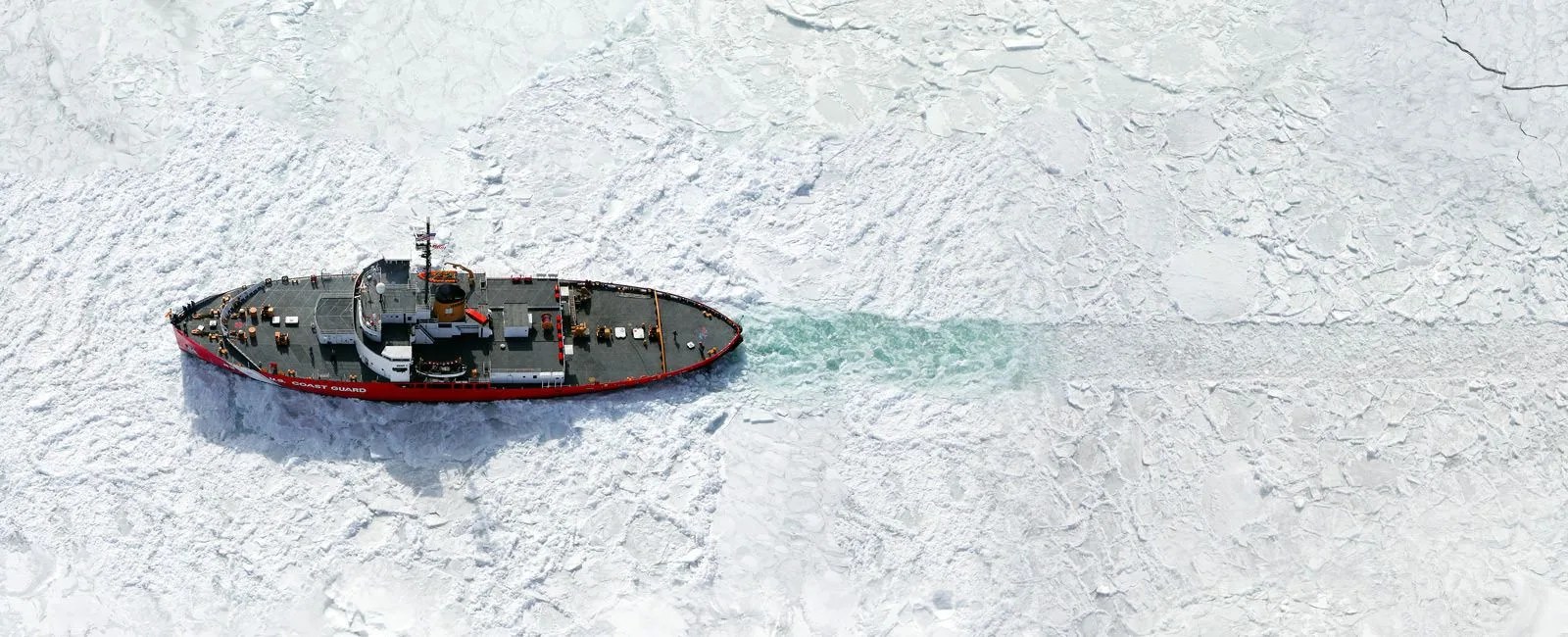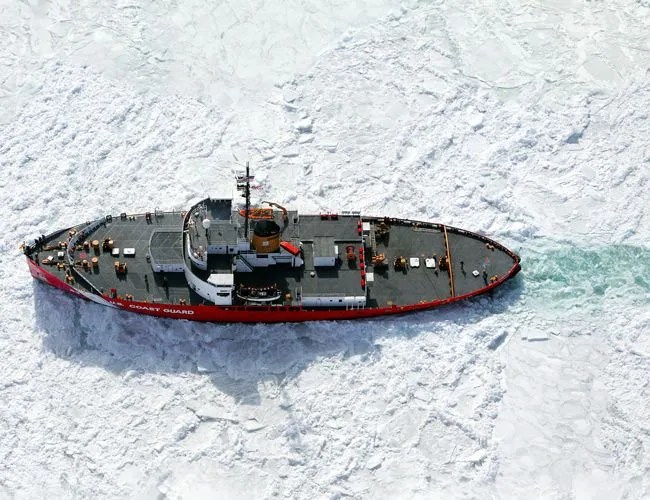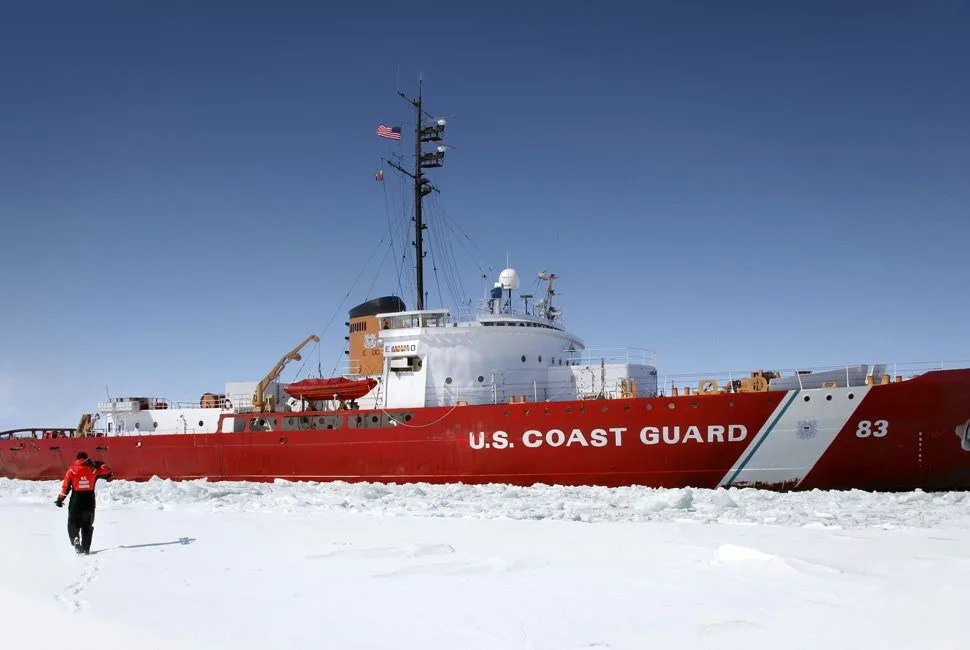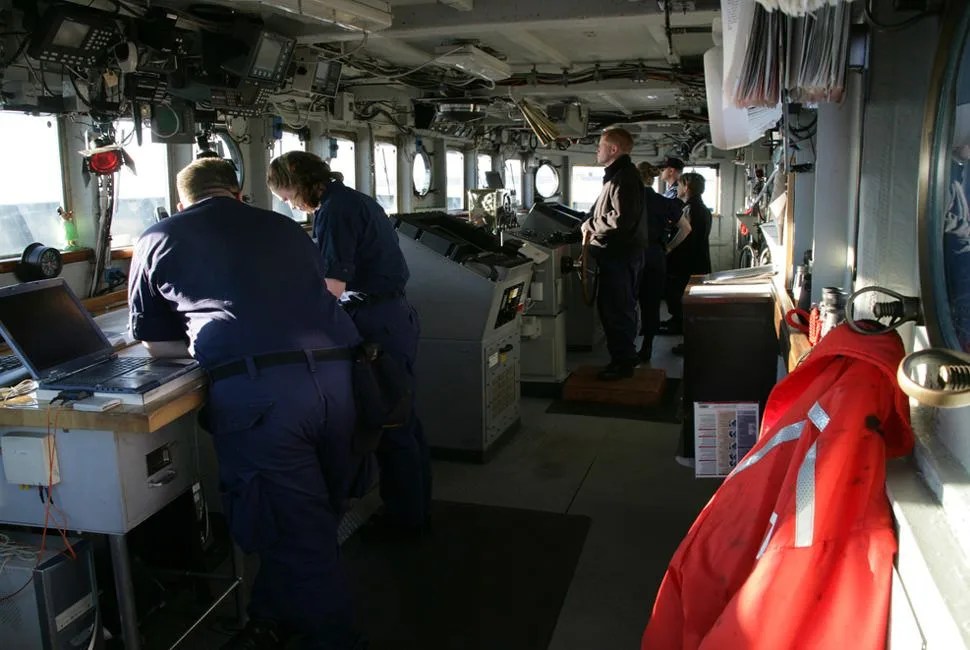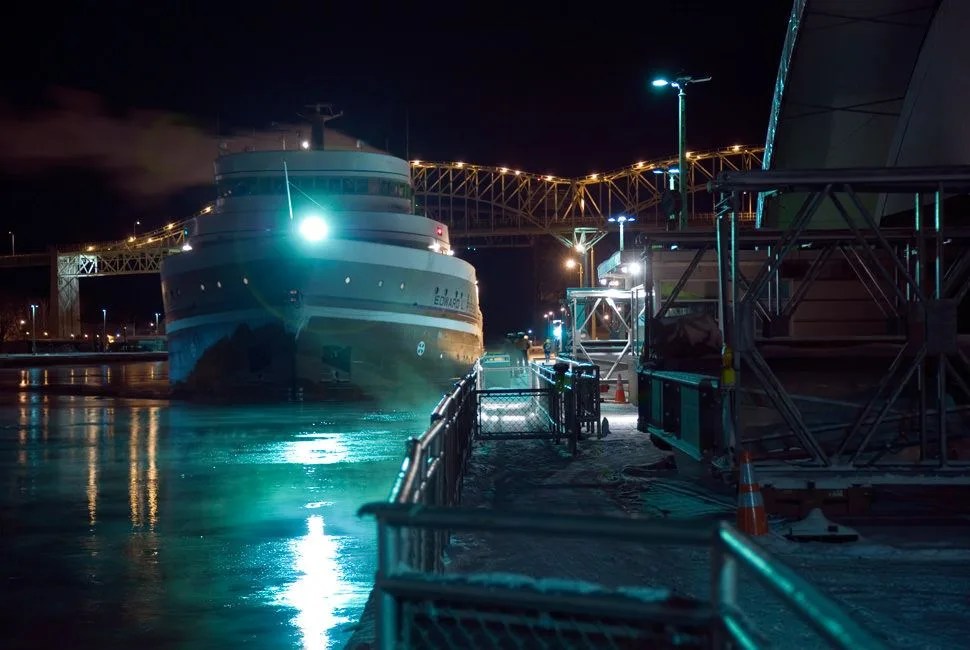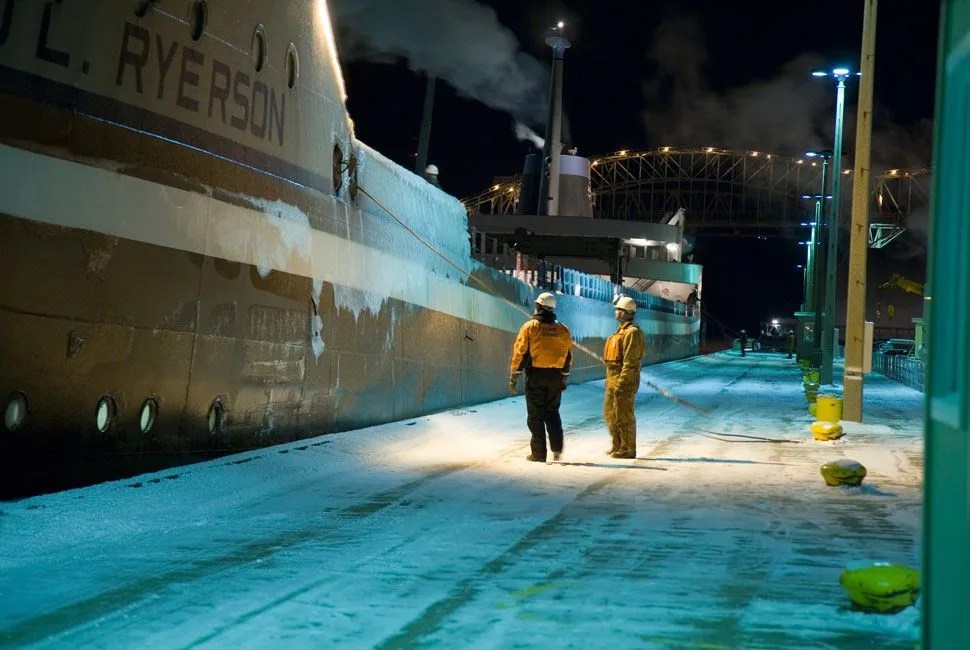14 photos
Great Lakes sailors are quick to point out that you don’t know winter sailing until you’ve stood the 12-to-4 a.m. deck watch at Two Harbors, Minnesota with a northwest gale blowing 40 knots in the second week of January. It takes a unique blend of stoicism and crazy to endure this life.

I didn’t sleep much on the downbound at first. That said, your constitution can and does adjust to anything, apparently — if you’re cold and tired enough. By the time we’d locked down to the level of Lake Huron, I only woke up when the unholy racket created by 18-inch plate ice giving way under our bow suddenly ceased, and we encountered a rare patch of open water.
I had been invited aboard the 1,000-foot “superlaker” Stewart J. Cort to photograph her third mate for a two-decade-long portrait project I was working on. In spite of the isolation and weather-induced misery, they say steam boating on the Great Lakes gets under your skin, and my subject, 28-year-old Brendan Groh, hails from the Lake Michigan port town of Sheboygan, Wisconsin, and is the sixth generation of his clan to ship out; someone in his direct bloodline has been walking the deck of a lake boat since 1842.
Navigation through the locks at Sault Ste Marie, Michigan officially ceases on the 15th of January, surrendering to the fact that ice has been choking it off a little more each day since about December 1. Each season, the bulk fleets race to stockpile iron ore at mills on the southern end of Lake Michigan and Lake Erie before the clock strikes midnight on the 15th and winter closes the St. Mary River. After putting their feet up at home for a few weeks, crews fit out the boats again and race to catch up with the stockpiling when the lock re-opens on March 25. Often that end of the frozen stick is worse than January, as the ice has thickened unperturbed for two months.
